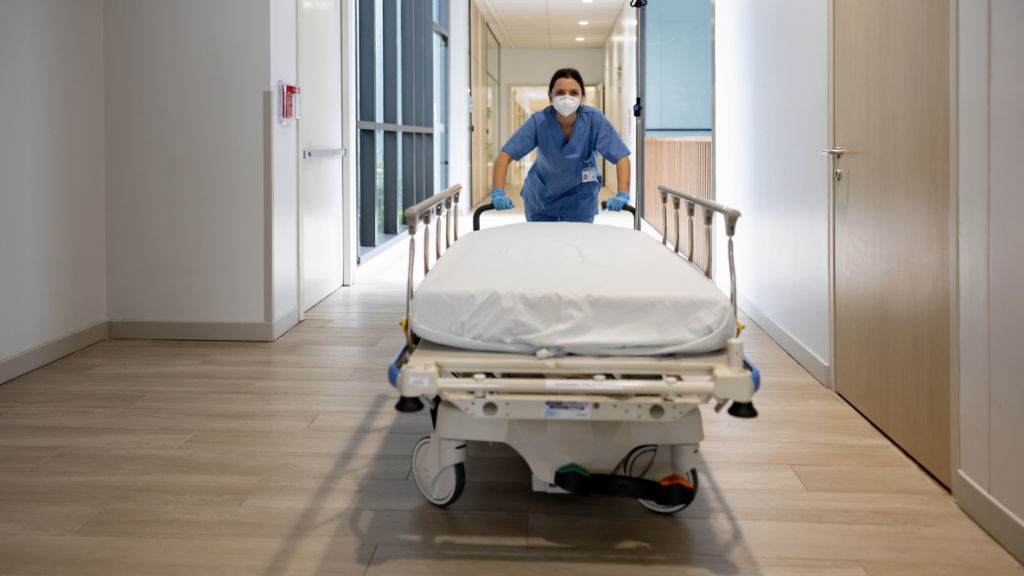1st confirmed monkeypox fatality reported in the US
The individual was severely immunocompromised.

A Los Angeles County resident with a severely weakened immune system has died of monkeypox, the Los Angeles Department of Public Health reported Monday (Sept. 12). The U.S. Centers for Disease Control and Prevention (CDC) also assessed the case and confirmed that the death was due to a monkeypox infection, according to the health department.
"The resident was severely immunocompromised and had been hospitalized," the health department statement reads. In general, immunocompromised people face a greater risk of developing severe monkeypox infections than the general public, as do children younger than age 8, people with a history of eczema and people who are pregnant or breastfeeding, Live Science previously reported.
"To protect confidentiality and privacy, additional information on this case will not be made public," the statement continues. "Persons severely immunocompromised who suspect they have monkeypox are encouraged to seek medical care and treatment early and remain under the care of a provider during their illness."
The death of the L.A. resident may mark the first confirmed U.S. monkeypox fatality during the ongoing outbreak. In late August, the Texas Department of State Health Services reported a similar case of a severely immunocompromised person dying after being diagnosed with monkeypox; however, at the time, officials were still investigating what role monkeypox played in that death. And as of Sept. 12, officials still hadn't announced whether that fatality was caused by monkeypox, the Los Angeles Times reported.
Related: Should everyone get a monkeypox vaccine?
As of Monday, nearly 58,000 cases of monkeypox had been reported worldwide, and about 57,500 of those cases had occurred in locations where monkeypox has not historically spread, according to the CDC. The U.S. alone has reported nearly 22,000 cases, with 4,300 of those cases occurring in California, the agency reported.
At least 18 people have died of monkeypox, globally: eight in places where monkeypox does not typically circulate and 10 in places where it does. (It's unclear whether this death toll has been updated to reflect the death of the L.A. resident, although as of Tuesday (Sept. 13), the fatality had not yet been noted on the CDC's main monkeypox landing page.)
Get the world’s most fascinating discoveries delivered straight to your inbox.
The monkeypox viruses driving the current outbreak, known as clade II monkeypox viruses, are typically less deadly than other monkeypox lineages. Historically, clade II viruses — formerly called the West African clade — have killed between 1% and 3.5% of people diagnosed with the disease, while clade I viruses — formerly the Congo Basin clade — have a case fatality rate between 6% and 10%, Live Science previously reported.
People who die of monkeypox may do so due to pulmonary distress, inflammation in the air sacs of the lungs (bronchopneumonia) or inflammation of the brain (encephalitis) that develops as a result of the infection, STAT reported. Other monkeypox fatalities have been tied to secondary bacterial infections and sepsis, a life-threatening immune reaction that causes widespread inflammation and organ damage.
So far in the current outbreak, doctors haven't determined whether all those who died of monkeypox died of the same immediate cause, such as pulmonary distress or sepsis, STAT reported. This may become clear if and when more data about each death are made publicly available or described in research papers.
Originally published on Live Science.

Nicoletta Lanese is the health channel editor at Live Science and was previously a news editor and staff writer at the site. She holds a graduate certificate in science communication from UC Santa Cruz and degrees in neuroscience and dance from the University of Florida. Her work has appeared in The Scientist, Science News, the Mercury News, Mongabay and Stanford Medicine Magazine, among other outlets. Based in NYC, she also remains heavily involved in dance and performs in local choreographers' work.


